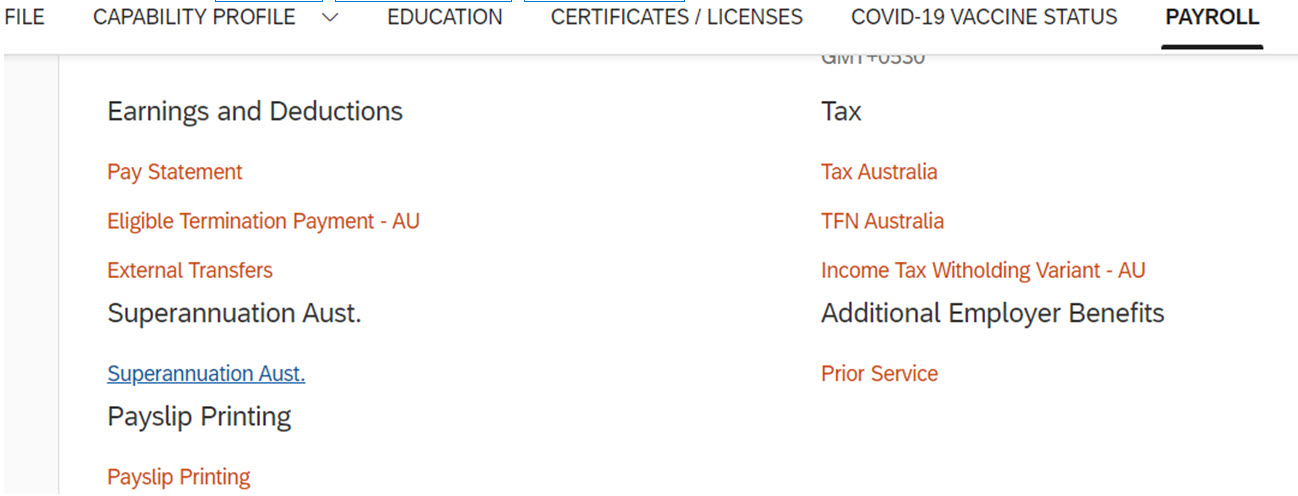
- SAP Community
- Products and Technology
- Human Capital Management
- HCM Blogs by SAP
- Enhance Mash-up screen for custom fields
Human Capital Management Blogs by SAP
Get insider info on SAP SuccessFactors HCM suite for core HR and payroll, time and attendance, talent management, employee experience management, and more in this SAP blog.
Turn on suggestions
Auto-suggest helps you quickly narrow down your search results by suggesting possible matches as you type.
Showing results for
RashiChowdhary1
Participant
Options
- Subscribe to RSS Feed
- Mark as New
- Mark as Read
- Bookmark
- Subscribe
- Printer Friendly Page
- Report Inappropriate Content
06-13-2023
5:00 PM
Introduction: -
With Cloud Hybrid HCM solution being implemented in so many businesses nowadays we as consultants are asked to implement so many enhancements which were part of the on-premise system onto the cloud solution.
Here is one such scenario I came across.
Business had enhanced a standard infotype by adding additional fields in their ECP system and needed those fields on the mashup screen as well.
Before we start with the mashup configuration we must ensure that
- Additional fields are already added on infotype level in the ECP system. Example Infotype 0220 is enhanced to have 3 additional fields.

Enhanced Infotype Screen with Additional Fields
- EC-ECP configuration is working and standard mashup for the infotype is configured so that data is either replicated to payroll or maintained in Employee Central using mashups.

Mashup Link on EC screen
In this blog we will see what configurations will be required to bring the additional fields on the mashup UI as well.
Solution and Steps: -
Go to Mash-up screen and right click and select ‘Technical Help’ to find the Web-dynpro and component names. Standard Mashup uses the configuration for webdynpro HRPAO_PAOM_MASTERDATA and the FPM used is FPM_FORM_UIBB_GL2.Under the FPM, we find the component configuration for the infotype that is used in Mashup.
In our example, it is HRPAO_DTL_FORM_IT0220_AU
 Technical-Help screen
Technical-Help screen
Login to the corresponding ECP system and go to transaction SE80.
Open the FPM component FPM_FORM_UIBB_GL2 we found in Step 1 and drill down to the correct Component Configurations for the infotype.
Double click and click on ‘Start Configurator’

SE80 screen
When the component opens up on the web browser click on Display and find the Feeder Class.

Component Configurator
Go to the Feeder Class Parameter and find the BOL Component and Object

Details of Feeder Class
Now go to transaction GENIL_MODEL_BROWSER and enter component HRPAD and Display.

GENIL_MODEL_BROWSER
Now under Abstract Structure, we find the Attribute structure HCMT_BSP_PA_AU_R0220 for IT0220.

Abstract Object for IT0220
Double clicking will take us to the structure. Here we can find the customer include for IT0220.

HCMT_BSP_PA_AU_R0220
We can add the same fields from the infotype screen which are additionally required on the Mash-up screen.

CI_AU_R0220
Activate the structure.
These steps assure the new fields are available to be added to the mash-up screen.
Additionally, use the HRPAD_R_EDIT_MODEL report to check infotypes to the HRPAD model has any error.
Once the fields are added to the structure, they available to be added on the UI.
Go to the Web browser where the FPM component is open. We click on Other Functions and Enhance.

Create Enhancement and Add the fields by creating a new Group as per screen requirements. Save the enhancement.
This adds the additional fields on the mash-up screen.

Enhanced UI screen with additional fields
Result:
With the above configuration steps, we now have the custom fields available on mashup as well to be used to enter data.
Here is how the end result will look on the mashup UI.

Final Mashup screen on EC with additional fields
Conclusion: -
Depending upon the business requirement we can use different infotypes as well using the same configurations and get the custom fields integrated on the UI.
The important point to note here is that this is done without writing BADI or a single piece of code and thus reducing the development efforts. Here we are essentially utilizing the logic already implemented for the infotype and extending them on the mashup UI.
Happy configuring 🙂
Note: - This blog does not describe the complete functionality on how to enhance the Webdynpros or enhance standard infotypes and is intended for consultants having technical knowledge.
- SAP Managed Tags:
- SAP SuccessFactors Employee Central integration to SAP Business Suite
Labels:
You must be a registered user to add a comment. If you've already registered, sign in. Otherwise, register and sign in.
Labels in this area
-
1H 2023 Product Release
3 -
2H 2023 Product Release
3 -
Business Trends
104 -
Business Trends
4 -
Cross-Products
13 -
Event Information
75 -
Event Information
8 -
Events
5 -
Expert Insights
26 -
Expert Insights
21 -
Feature Highlights
16 -
Hot Topics
20 -
Innovation Alert
8 -
Leadership Insights
4 -
Life at SAP
67 -
Life at SAP
1 -
Product Advisory
5 -
Product Updates
499 -
Product Updates
44 -
Release
6 -
Technology Updates
408 -
Technology Updates
13
Related Content
- Create Personal Goals Using Generative AI in Human Capital Management Blogs by Members
- Sending Email notifications for Time Valuation Alerts in Human Capital Management Blogs by SAP
- SAP SuccessFactors Talent Intelligence Hub H1 2024 Release Insights in Human Capital Management Blogs by Members
- New 1H 2024 SAP Successfactors Time (Tracking) Features in Human Capital Management Blogs by SAP
- Custom formula shows N/A in the form in Human Capital Management Q&A
Top kudoed authors
| User | Count |
|---|---|
| 5 | |
| 3 | |
| 2 | |
| 2 | |
| 1 | |
| 1 | |
| 1 | |
| 1 | |
| 1 | |
| 1 |